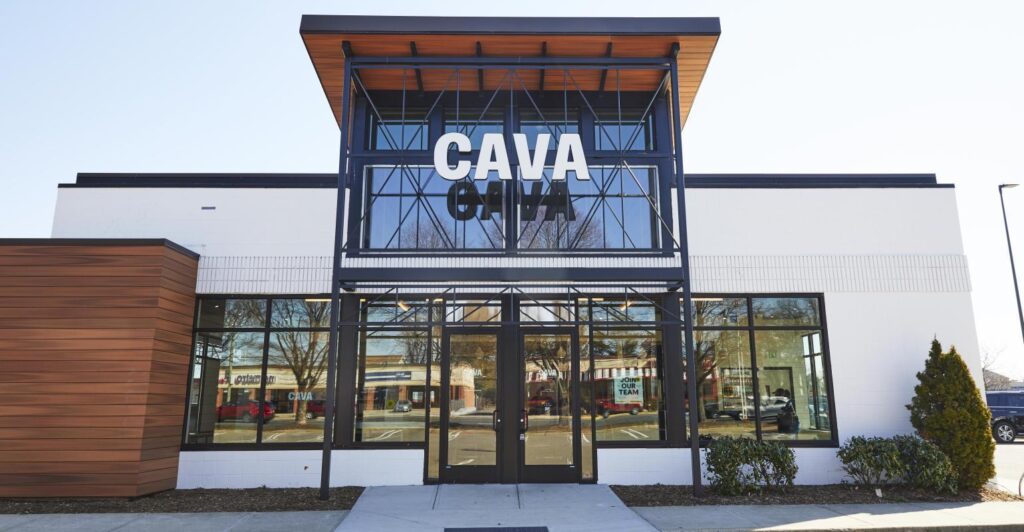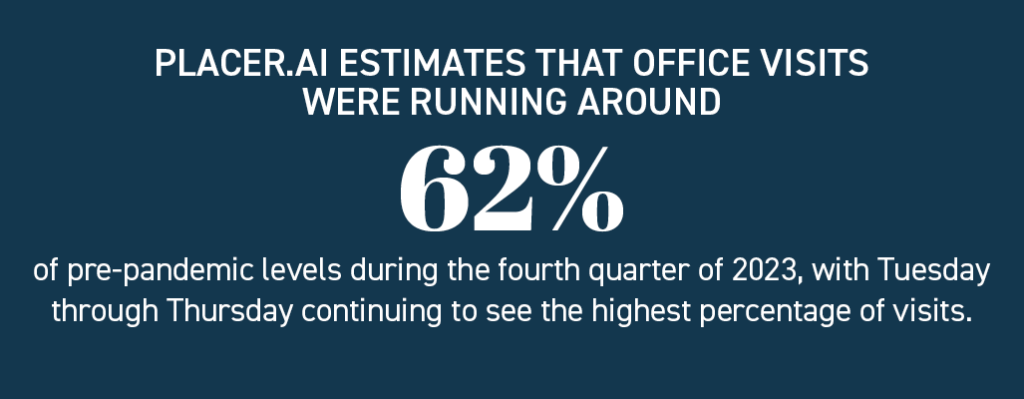More than ever, restaurant growth is impacted by geographic variations
Dominating trend continues to be the repopulation of urban markets.
22 May 2024
Share this exclusive content from Saladplate

Photo Credit: CAVA
What does “growth” mean for restaurant businesses in this “new normal”? Find out below and throughout the Growth Report:
• A look at today’s growth pinch points: financing, labor, real estate
• This segment has emerged as the sweet spot for industry growth
• How four concepts are approaching their growth strategies
As we zoom out to look at the changing — less linear — approach to growth, it becomes clear that geographic variations matter more than ever. At least, that is the perspective of Hudson Riehle, senior vice president of the research and knowledge group at the National Restaurant Association.
During a recent interview, he noted one of the industry’s biggest trends in the near term will be how city centers/urban markets continue to repopulate after experiencing a significant retrenchment during Covid. Many restaurant concepts hitched their wagon to a vibrant lunch and after-work office crowd that used to permeate such neighborhoods, but those office workers disappeared by up to 80% in 2020. Those workers’ return has been slow, to put things conservatively.
“The outward migration changed the business economics of these city center restaurants’ operations, and many have had to adapt. Some operators followed that migration, but as re-migration happens, we look at employee occupancy levels and they still remain extremely low,” Riehle said. “This has introduced another element of uncertainty and variability to operators located in these city center areas. Perhaps one of the biggest questions facing the industry’s growth now is whether, when, or how that trend proceeds.”

Placer.ai estimates that office visits were running around 62% of pre-pandemic levels during the fourth quarter of 2023. | Photo Credit: Sue Persall
Restaurants with a heavy urban presence have a long road to recovery, in other words, and even more factors, like labor costs, are now impacting their strategic growth plans. The differential between weekdays and weekends, and the uncertain foot traffic created by hybrid work models, have also added challenges, and many operators have had to reengineer their business models to remain viable, Riehle said.
“Unit economics at city center restaurants — occupancy, labor, utility costs — vary widely, and margin pressures have become even higher. It’s not a ‘now’ thing, but ongoing,” he said.
R.J. Hottovy, head of analytical research at Placer.ai, agrees that return-to-office trends in urban markets remain a headwind for many restaurant concepts.
“We estimate that office visits were running around 62% of pre-pandemic levels during the fourth quarter of 2023, with Tuesday through Thursday continuing to see the highest percentage of visits,” he said. “Office visit trends vary by market, but New York and Miami continue to outperform the national average, while San Francisco and Chicago remain laggards.”
As a result of this continuing uncertainty, several chains, including Chipotle and CAVA, have shifted their development strategies to focus more on suburban markets.
“Those locations have outperformed industry visitation trends, while others located primarily in urban settings have responded by adjusting hours of operations, reducing staff, and in some cases, shrinking the size of their stores,” Hottovy said.
This schism between urban recovery and suburban growth has become a bit more pronounced in California, which recently implemented a $20-an-hour wage increase. According to Blake Kaplan, managing director of JLL, urban locations are still struggling while suburban locations “are on fire.”
“If it’s really good real estate in an urban location, they’ll jump on it, but suburban is where a lot of these brands are focusing,” he said. “There is almost a guaranteed success now from polished brands to focus on suburban markets where they won’t be as challenged. For urban, it just depends on the area. Some urban locations are mission critical right now.”
Fragmentation extends beyond urban vs. suburban
Looking ahead, this sort of urban versus suburban divergence underscores a broader trend in that the restaurant industry is becoming more fragmented in general. It’s not just limited service and full service anymore and, in fact, about 70 segments have been defined by the National Restaurant Association with entirely different business models. Then there’s regional, state, and metro economic disparities to consider.
“In general, the industry likes to see population growth, which coincides with employment growth and that translates into income growth and that translates into stronger restaurant sales growth,” Riehle said. “There are underlying economic infrastructures in each market that translate into how different concepts can succeed. Then you have the different microeconomic climates, like city centers.
“As the industry progresses, it has become more fragmented, just as the overall economy is becoming more fragmented. The old adage that ‘all restaurant sales are local’ is ringing more true as the years progress.”

Source: Nation’s Restaurant News



